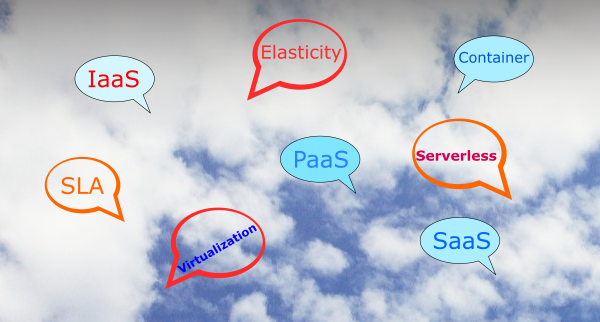Cloud Computing Services as Emancipative Technologies

We are all becoming familiar with the phrase “disruptive technologies” nowadays which is in widespread use in connection with emerging technologies (e.g., cloud services) because these technologies do away with conventional on-premises deployment of services (e.g., servers and associated IT infrastructure). While this is true in the developed world, the situation in the developing world is quite different. If we are referring to disruptive technologies in the context of end-user scenarios, how are we to describe an emerging technology with no prior technology to disrupt?
I have been following, with keen interest, how the mobile phone and smartphone have been transforming Ethiopia (and the rest of developing countries for that matter) within a short period of time over a decade or so. To this background, I also recall widespread complaints about how getting landline telephone was taking months and even years of waiting time. This was the case because there was no competitive business incentive (state monopoly of telecoms) as well as poor infrastructure even for the last-mile landline connections.
When the mobile phone technology arrived on the scene, the main infrastructure required was a small cluster of wireless base-stations, relatively easy to install and with a few of these serving thousands of mobile users. Not only urban dwellers but over a short period the mobile phone also transformed the lives of rural population where landline telephony was virtually non-existent. Hence, while the mobile phone technology may be regarded as being disruptive to the landline telephony in the developed world, the same may not be said for under-developed countries (because the technology to be disrupted didn’t exist to begin with). In this case, the new technology provides “quantum leap” innovative solutions and in all likelihood with direct or indirect improvement to end-users’ quality of life.
For want of more descriptive terms appropriate to the context just outlined, I propose the phrase “emancipative technologies” (my own coinage and hope it will catch on!). Mobile phones (and smartphones) in under-developed countries proved to be emancipative technologies as they provide a multitude of leap-forward solutions as bundled services (voice comms, data comms, multimedia messaging, wireless and mobile internet services, personal computing, e-commerce including cashless payment services, et cetera), which otherwise were unattainable without the handy mobile device.
New Emerging Opportunities
Another emancipative technology that is poised to have a profound impact, perhaps more than what we are witnessing with mobile smartphones, is Cloud Computing. Smartphones coupled with Cloud Computing will undoubtedly go a long way to provide innovative solutions in the developing world which otherwise are prohibitively unaffordable or even unthinkable with conventional computing infrastructure.
Note: Cloud Computing is evolving as Public (owned and operated by third-party cloud service providers), Private (used exclusively by a single business or organisation), and Hybrid (a combination of Public and Private). In the context of developing countries as described in this Article, the public type of Cloud Computing is assumed.
Close inspection of key attributes for Cloud Computing will, in fact, affirm that the term ‘emancipative’ is indeed very fitting, because in the context of developing countries these key attributes turn out to be direct solutions or at a very least mitigations to the very challenges in developing countries (in terms of requisite skill base, upfront costs, management and maintenance costs, environmental costs, other overhead cost, etc). The following items, by no means exhaustive, highlight some of the key points as to why Cloud Computing may be regarded as an emancipative technology.
- Cloud Computing avoids or minimizes up-front IT infrastructure costs.
- Cloud Computing resources typically use a “pay-as-you-go” model and always available on-demand when more is needed with consumption optimized as required.
- Cloud Computing has minimal to zero manageability and maintenance requirements.
- From the above follows that security concerns are also significantly minimized by adhering to more coherent security and protection strategies as outlined by cloud providers (due to the fact that the hardware and software reside in the cloud and by and large the responsibility of service providers). While security is ultimately a shared responsibility between cloud service providers and users, with the cloud, users are provided with more effective security controls and capabilities to control their data and applications.
- Cloud Computing skill base is more streamlined with a main focus on developing and deploying solutions (due to the fact that labor and skill intensive physical hardware and infrastructure are replaced by the cloud).
- Cloud Computing is inherently green technology as it’s based on resource sharing and consolidation of infrastructure, and more so at the end-user side as, typically, only thin clients (smartphones, low power display devices) would be required, thereby significantly reducing consumption of electricity.
- Cloud Computing eliminates numerous problems inherent with the conventional approach; for instance, unpredictable and/or fluctuating demands that can have serious impact on conventional IT whereas such problems can be easily smoothed out simply by increasing on-demand resources that Cloud Computing can readily provide.
- Cloud Computing can change the way we work. If we migrate our business to the Cloud, our access to business activities is not restricted by time of day, location, or type of device we use. In the most radical sense, work will no more be where and what time, it will be what we do from anywhere at any time. While this may be a long way down the road in the developing countries, say, as in tele-working, there are many small businesses in the IT field that can benefit from the ‘anywhere any time’ mode of working.
The above are key benefits that can be readily gained by simply opting for Cloud Computing. We haven’t even scratched the surface of innovative solutions that Cloud Computing is to offer in various domains such as in health, education, finance, transport, teleworking, etc. Can Cloud Computing play a role in narrowing the Digital Divide?
The Challenges
No technology is without its downsides and Cloud Computing is no exception. Therefore, the benefits outlined above, as well as solution designs and deployments are not without their challenges. There are already existing and new challenges. For developing countries, the inadequate Critical Internet Infrastructure is one main challenge with regard to new technologies such as cloud services. This is the case because when it comes to backbone infrastructure such as International Internet Connectivity, developing countries are poorly equipped and in most cases limited to very expensive satellite connections. Likewise, there is some way to go in improving the local and national mobile and broadband internet infrastructure.
There are also challenges intrinsic to cloud services, for instance, in the context of design, configuration, deployment, service availability and so on. The good news is that these challenges are expected to be significantly less than conventional IT infrastructure with a mix of on-premises hardware and software resources. The fact that cloud computing by its very nature is an abstraction of resources (pushed into the cloud with minimal management and maintenance) is indicative of significantly reduced challenges. Any issues that arise are therefore within configuration and programming domains and can be tackled with adequate training and experience.
Are we forgetting the cost of deploying cloud services, particularly in developing countries? There is no doubt that cloud service providers will seek returns on their R&D investments and cost can be a critical consideration, at least at an early stage. This being the case, it is also true that cloud services are the most amenable to cost optimization (as should be evident from key attributes outlined above). As a crude but practical example, consider the time and fuel wasted in gridlocked busy cities, be it for work commute or trips to marketplace. If innovative solutions exist to alleviate such a travel problem, it means that the cost of cloud services can be offset by the saving made in wasted time and fuel. The cost benefit analysis for innovative solutions is generally subtler and we shouldn’t be deterred by the price tag against cloud services. In the context of developing countries, it is also possible that the cost may be tempered by international donor initiatives and development programmes aimed at narrowing the Digital Divide as well as corporate developmental assistance. One example of the latter is the Microsoft 4Afrika Initiative.
Conclusion
Considering all the challenges against potential benefits that emerging technologies can offer, there is one conclusion of critical importance to be made: information and communication technologies are not a luxury [any more] but are a critical factor in paving the way to knowledge and improved quality of life and ultimately wealth creation. Inseparable from this objective is the twin task of training the necessary skilled workforce.
Developing countries must prepare now to reap the benefits of Cloud Computing and related emerging technologies in the offing. They must align their development strategies with effective policies capable of tapping into these new technologies for wealth creation.
☀☀☀
© 2018 Demessie Girma















0 Comments